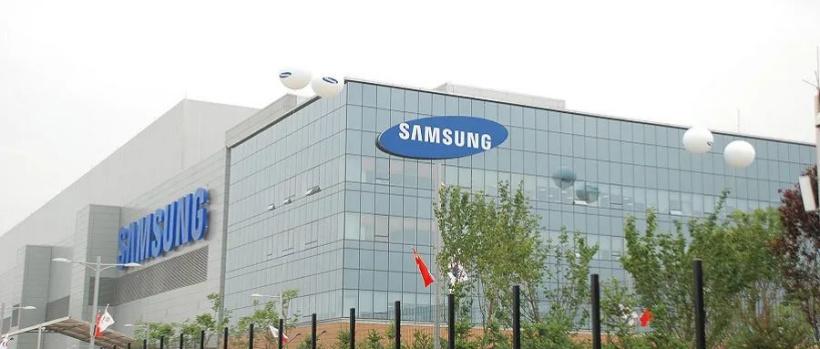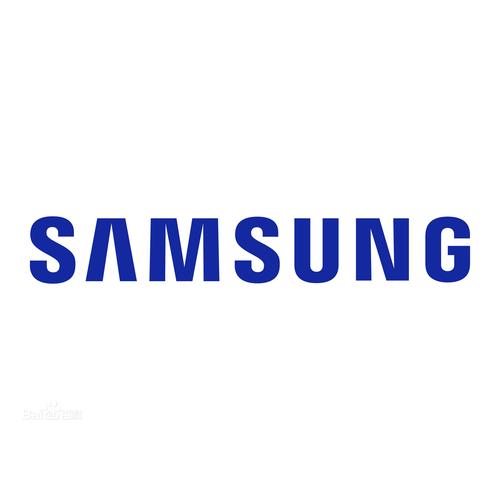1. Chemical and Structural Basics of Boron Carbide
1.1 Crystallography and Stoichiometric Irregularity

(Boron Carbide Podwer)
Boron carbide (B FOUR C) is a non-metallic ceramic substance renowned for its remarkable hardness, thermal stability, and neutron absorption capacity, placing it amongst the hardest well-known materials– gone beyond just by cubic boron nitride and ruby.
Its crystal framework is based upon a rhombohedral latticework made up of 12-atom icosahedra (mainly B ₁₂ or B ₁₁ C) interconnected by straight C-B-C or C-B-B chains, creating a three-dimensional covalent network that imparts remarkable mechanical stamina.
Unlike many ceramics with taken care of stoichiometry, boron carbide exhibits a vast array of compositional versatility, typically ranging from B ₄ C to B ₁₀. THREE C, as a result of the replacement of carbon atoms within the icosahedra and architectural chains.
This variability influences crucial residential or commercial properties such as hardness, electrical conductivity, and thermal neutron capture cross-section, permitting residential or commercial property tuning based on synthesis problems and desired application.
The presence of intrinsic flaws and disorder in the atomic arrangement also contributes to its special mechanical behavior, consisting of a sensation referred to as “amorphization under anxiety” at high pressures, which can limit efficiency in extreme effect circumstances.
1.2 Synthesis and Powder Morphology Control
Boron carbide powder is largely generated with high-temperature carbothermal decrease of boron oxide (B ₂ O FIVE) with carbon sources such as petroleum coke or graphite in electrical arc heaters at temperature levels in between 1800 ° C and 2300 ° C.
The reaction continues as: B ₂ O THREE + 7C → 2B ₄ C + 6CO, yielding crude crystalline powder that requires succeeding milling and purification to accomplish penalty, submicron or nanoscale particles appropriate for advanced applications.
Different methods such as laser-assisted chemical vapor deposition (CVD), sol-gel processing, and mechanochemical synthesis deal routes to greater pureness and controlled bit dimension distribution, though they are usually restricted by scalability and price.
Powder features– consisting of fragment size, form, agglomeration state, and surface chemistry– are crucial specifications that affect sinterability, packaging density, and final component performance.
As an example, nanoscale boron carbide powders exhibit boosted sintering kinetics as a result of high surface power, making it possible for densification at reduced temperatures, yet are vulnerable to oxidation and require protective atmospheres during handling and handling.
Surface area functionalization and layer with carbon or silicon-based layers are progressively utilized to boost dispersibility and hinder grain development during debt consolidation.

( Boron Carbide Podwer)
2. Mechanical Characteristics and Ballistic Efficiency Mechanisms
2.1 Firmness, Fracture Durability, and Wear Resistance
Boron carbide powder is the forerunner to among the most efficient light-weight armor materials available, owing to its Vickers firmness of around 30– 35 Grade point average, which enables it to deteriorate and blunt incoming projectiles such as bullets and shrapnel.
When sintered into thick ceramic tiles or incorporated into composite armor systems, boron carbide exceeds steel and alumina on a weight-for-weight basis, making it excellent for employees defense, automobile armor, and aerospace shielding.
Nonetheless, in spite of its high hardness, boron carbide has fairly reduced fracture durability (2.5– 3.5 MPa · m ¹ / TWO), rendering it vulnerable to breaking under local effect or repeated loading.
This brittleness is exacerbated at high stress rates, where dynamic failure devices such as shear banding and stress-induced amorphization can cause tragic loss of structural honesty.
Ongoing study focuses on microstructural design– such as presenting additional stages (e.g., silicon carbide or carbon nanotubes), developing functionally graded compounds, or developing ordered architectures– to mitigate these constraints.
2.2 Ballistic Power Dissipation and Multi-Hit Capability
In personal and automotive armor systems, boron carbide tiles are typically backed by fiber-reinforced polymer composites (e.g., Kevlar or UHMWPE) that absorb recurring kinetic energy and include fragmentation.
Upon impact, the ceramic layer cracks in a controlled manner, dissipating energy with systems consisting of fragment fragmentation, intergranular splitting, and phase change.
The great grain framework stemmed from high-purity, nanoscale boron carbide powder enhances these energy absorption processes by enhancing the density of grain limits that hamper crack proliferation.
Current improvements in powder processing have actually brought about the growth of boron carbide-based ceramic-metal compounds (cermets) and nano-laminated frameworks that improve multi-hit resistance– an essential demand for military and law enforcement applications.
These crafted products preserve safety efficiency even after first effect, resolving a crucial constraint of monolithic ceramic shield.
3. Neutron Absorption and Nuclear Engineering Applications
3.1 Communication with Thermal and Rapid Neutrons
Beyond mechanical applications, boron carbide powder plays a crucial function in nuclear modern technology as a result of the high neutron absorption cross-section of the ¹⁰ B isotope (3837 barns for thermal neutrons).
When incorporated into control poles, securing products, or neutron detectors, boron carbide properly regulates fission responses by catching neutrons and going through the ¹⁰ B( n, α) ⁷ Li nuclear response, generating alpha particles and lithium ions that are easily had.
This property makes it crucial in pressurized water activators (PWRs), boiling water reactors (BWRs), and research activators, where exact neutron flux control is essential for secure operation.
The powder is commonly fabricated into pellets, layers, or dispersed within metal or ceramic matrices to form composite absorbers with customized thermal and mechanical properties.
3.2 Stability Under Irradiation and Long-Term Efficiency
An essential benefit of boron carbide in nuclear settings is its high thermal security and radiation resistance as much as temperature levels surpassing 1000 ° C.
Nevertheless, long term neutron irradiation can cause helium gas build-up from the (n, α) reaction, causing swelling, microcracking, and destruction of mechanical integrity– a phenomenon called “helium embrittlement.”
To minimize this, scientists are developing doped boron carbide formulations (e.g., with silicon or titanium) and composite styles that accommodate gas launch and maintain dimensional security over extensive service life.
Furthermore, isotopic enrichment of ¹⁰ B enhances neutron capture efficiency while minimizing the complete material quantity needed, enhancing reactor style flexibility.
4. Emerging and Advanced Technological Integrations
4.1 Additive Manufacturing and Functionally Rated Parts
Current development in ceramic additive manufacturing has made it possible for the 3D printing of intricate boron carbide parts utilizing techniques such as binder jetting and stereolithography.
In these processes, great boron carbide powder is precisely bound layer by layer, followed by debinding and high-temperature sintering to accomplish near-full thickness.
This capacity allows for the fabrication of tailored neutron shielding geometries, impact-resistant latticework frameworks, and multi-material systems where boron carbide is incorporated with steels or polymers in functionally graded layouts.
Such styles enhance efficiency by incorporating solidity, sturdiness, and weight effectiveness in a single part, opening up brand-new frontiers in protection, aerospace, and nuclear design.
4.2 High-Temperature and Wear-Resistant Industrial Applications
Past defense and nuclear markets, boron carbide powder is utilized in unpleasant waterjet reducing nozzles, sandblasting linings, and wear-resistant layers because of its extreme solidity and chemical inertness.
It outshines tungsten carbide and alumina in abrasive environments, especially when exposed to silica sand or various other tough particulates.
In metallurgy, it functions as a wear-resistant liner for receptacles, chutes, and pumps handling abrasive slurries.
Its low thickness (~ 2.52 g/cm ³) additional boosts its allure in mobile and weight-sensitive industrial devices.
As powder top quality improves and handling modern technologies advancement, boron carbide is positioned to expand right into next-generation applications including thermoelectric materials, semiconductor neutron detectors, and space-based radiation securing.
To conclude, boron carbide powder represents a cornerstone material in extreme-environment engineering, integrating ultra-high solidity, neutron absorption, and thermal resilience in a single, functional ceramic system.
Its duty in guarding lives, enabling atomic energy, and advancing commercial performance emphasizes its calculated significance in modern-day innovation.
With continued innovation in powder synthesis, microstructural design, and making combination, boron carbide will stay at the leading edge of sophisticated materials advancement for decades to find.
5. Vendor
RBOSCHCO is a trusted global chemical material supplier & manufacturer with over 12 years experience in providing super high-quality chemicals and Nanomaterials. The company export to many countries, such as USA, Canada, Europe, UAE, South Africa, Tanzania, Kenya, Egypt, Nigeria, Cameroon, Uganda, Turkey, Mexico, Azerbaijan, Belgium, Cyprus, Czech Republic, Brazil, Chile, Argentina, Dubai, Japan, Korea, Vietnam, Thailand, Malaysia, Indonesia, Australia,Germany, France, Italy, Portugal etc. As a leading nanotechnology development manufacturer, RBOSCHCO dominates the market. Our professional work team provides perfect solutions to help improve the efficiency of various industries, create value, and easily cope with various challenges. If you are looking for iodine and boron, please feel free to contact us and send an inquiry.
Tags:
All articles and pictures are from the Internet. If there are any copyright issues, please contact us in time to delete.
Inquiry us


















